| Title | Pages |
|---|---|
| The Microscopic and GC-MS Analysis of Turkish Honeydew (Pine) Honey 78 honey samples were collected from September to November between the years 2004-2006 where the most of the honeydew beekeeping process is realized in Muğla city in Turkey. All honey samples were inves- tigated with microscope and were checked the Number of Honeydew Elements (NHE) and the Number of Total Pollen (NTP). The quality of honey samples was determined by correlating NHE to NTP ratio and the honey which has NHE to NTP ratio bigger than 4.5 was accepted as a high density superior quality honeydew (pine) honey. As a result of identifications which have been made in microscope, 50 honey samples of 78 honey samples were selected as high quality pine honey and they were appropriate ones to study for GC-MS chemical compounds analysis. As a result of GC-MS chemical compounds analysis of 50 honeydew honeys were found chemical compounds which are important for human body. These are aromatic aldehydes, aldehydes, aromatic alcohols, flavanones, linear hydrocarbons, aromatic hydrocarbons, aromatic acids, aromatic acid esters, linear acid esters and other chemical compounds. 



|
375 - 383 |
| Synthesis and Thermal Degradation Kinetics of Poly(methacrylamide)/Clay Nanocomposites using Intercalated Monomer Method Anovel method was used successfully for the synthesis of poly(methacrylamide)-montmorillonite (PMAA/ Mont) nanocomposites. Methacrylamide (PMAA) was first intercalated into the interlayer regions of clay minerals by ion exchange reaction. The intercalation of monomers into Mont was confirmed by FTIR, XRD and TGA techniques. Then, the monomers polymerized within the montmorillonite (Mont) layers for preparation of nanocomposites in different clay loading degrees. The morphology and thermal behaviors of nanocomposites were found to be strongly dependent on the clay content. XRD and SEM analysis indicated that the resultant nanocomposites exhibited intercalated morphologies with homogeneous clay platelet distribution. The Kissin- ger method was used for the calculation of the decomposition activation energy. Activation energies of PMAA/ Mont nanocomposite are higher than those of neat PMAA, indicating that addition of clay mineral improves thermal stability of neat polymer. 

|
385 - 394 |
| Phenolic Composition, Colour and Anthocyanin Stability of Black Mulberry and White Mulberry Jam as Affected by Cultivar and Storage Temperature Jams were prepared from two mulberry cultivars; ‘Morus nigra L. (black mulberry)’, ‘Morus alba L. (white mulberry).’ Jams were stored at 5 and 25 ̊C, in darkness and under daylight (750 lux). The quality parameters assessed were Hunter L*;a*;b*, anthocyanin pigments and the contents of total phenolics. During storage, eventhough amount of total phenolics and anthocyanins decreased; this reduction was insignificant by statistical. Jam produced from both of cultivars stored at 5 ̊C had better colour qualities than jam stored at 25 ̊C. The light conditions during storage did not affect the quality parameters of the product during four months of storage. 
|
395 - 399 |
| Isoelectric Point Determination of Proteins Using Track-Etched Single-Nanopore Membrane In this study, we have investigated a new method to determine the pI values of proteins compared to the conventional methods. We developed a new sensing platform and paradigm to succeed it. The track-etched poly(ethylene terephthalate) (PET) membranes were used to fabricate both single and multipore membranes. Two-step chemical etching method was prefered to fabricate single nanopore in a reproducible manner. EDC-coupling was used to modify and attach the proteins inside the nanopore surface. By the aid of ion current rectification, the surface charge characteristics of nanopores were identified with and without protein. A close approximation was successfully made to the literature values for the pI values of proteins using nanopore membranes respect. 


|
401 - 407 |
| Novel Carbonic Anhydrase Activators in the Rats Exposed to H2O2 Carbonic anhydrase has an important role in attentional gating of memory storage, signal process and long term synaptic transformation beside its pH regulation, HCO- reabsorption and CO2 expiration tasks. Within the study, in vivo effects of (Benzofurane-2-yl)(3-phenyl-3-methylcyclobutyl)ketoxime (A), (Benzofurane-2-yl)(3-methyl-3-mesitylcyclobutyl)ketone thiosemicarbazone (T), 1,3-bis(2-chlorbenzoyl)imidazoline-2-thione (B) which are synthetic products and H2O2 (H) on the carbonic anhydrase activity in the liver, erythrocyte, heart and kidney tissues of male Wistar rat were analyzed. For this purpose, control group, separate groups for each of the synthetic products, H2O2 group and H2O2 combination group with synthetic products were created. As a result of the obtained evidence, a decrease in carbonic anhydrase activity was observed in examined tissues exposed to H2O2, but A compound has activation effect on enzyme activity in liver, T compound has it in eryt- hrocyte and heart tissues, B compound has it in liver and erythrocytes. 



|
409 - 417 |
| Development of an Electrochemical Aptasensor for Detection of Ochratoxin A Asensitive electrochemical aptasensor for label free detection of Ochratoxin A (OTA) is presented in this study. 5’thiohexyl (SH- (CH2)6) linked aptamer sequence was immobilized onto disposable screen printed gold electrode surfaces (AuSCPE) via thiol bounding. Interaction between OTA and DNA aptamer was monitored by Electrochemical Impedance Spectrometry (EIS) in the presence of 5mM [Fe(CN)6]3-/4- based on electron transfer resistance (Rct). And a limit of detection was found to be 0.375 nM. 
|
419 - 423 |
| Electrochemical Synthesis of Poly(pyrrole-co-[Cu(salabza)]): its Electrocatalytic Activity Towards the Oxidation of Catechol This paper presents the study of the electrochemical synthesis of poly(pyrrole-co-[Cu(salabza)]) and its app- lication to the electrocatalytic oxidation of catechol. The synthesis has been achieved by cyclic voltammetry (CV) technique on the platinum electrode in non-aqueous acetonitrile solution. The characterization of the copolymer was done by using FT-IR, UV-vis, CV, Scanning Electron Microscopy (SEM), TG-DTA techniques. The SEM micrographs clearly indicate that the copolymer film has different structure from [Cu(salabza)] and polyp- yrrole films. Moreover, electrochemical studies show that the copolymer film has good stability and electro ac- tivity. As well, the electrocatalytic studies show that the copolymer coating exhibited catalytic activity towards the oxidation of catechol. 




|
425 - 434 |
| In vitro Effects of Certain Plant Extracts on Acetylcholinesterase (EC 3.1.1.7) Enzyme in Lake Van Fish Liver and Brain In this study, the effect of Glycyrrhiza glabra (Leguminosae), Pimpinella anisum (Umbelliferae) and Matricaria chamomilla (Compositae) extracts on both Lake Van fish (Chalcalburnus tarichi P.1811) brain and liver acetylcholinesterase enzymes (AChE) activity, responsible for transformation of nerve stimulations, has been investigated. While activating fish liver AChE, these extracts inhibited fish brain AChE activity. The plants used in the showed noncompetitive inhibition on the fish brain AChE. I50 


|
435 - 440 |
| Multifunctional Electrospun Biocompatible Nanofiber Composites from Water Dispersion Blends of Folic Acid Conjugated PVP/Dextran/ODA-MMT Nanocomposites and Their Responses to Vero cells This work presents the fabrication and characterization of novel colloidal multifunctional polymer nanofi- ber composites (NFCs) from water dispersion blends of the intercalated silicate layered nanocomposites of poly(2-vinyl-N-pyrrolidone)/octadecyl amine-montmorillonite (PVP/ODA-MMT) and Dextran/ODA-MMT as matrix and partner polymer intercalated nanocomposites, as well as their folic acid (FA) conjugated derivatives by reactive electrospinning. The chemical and physical structures, surface morphology and responses to Vero cells of NFCs were investigated. Effects of matrix/partner polymer volume ratios, composition, organoclay and FA on the main important parameters of NFCs were evaluated. Cell culture studies showed that NFCs did not exhibit cytotoxicity significantly and also had a low degree of apoptotic and necrotic effects. 



|
441 - 450 |
| A Detailed Benchmark and Modeling of the Excited and Emissive States of A Salen Type Tetradentate Schiff Base and Its Zn(II) Complex: Synthesis, Characterization, Fluorescence and TD-DFT Study A2:1 condensation of 2-hydroxy naphthaldehyde with 1,3-diaminopropane have resulted symmetrical tet- radentate NNOO Schiff base ligand namely N,N -bis(2-hydroxy-naphthaldimine)-2,3-diaminopropane (napdap) and 1:1 mixing of this ligand with Zn(ClO4)2·6H2O in THF yielded the complex (N,N -bis(2-hydroxy-naphthaldimine)-2,3-diaminopropanato)zinc(II) (1). Characterizations of the compounds have been carried out by Elemental analyses, IR spectroscopy, Electro-spray ionization mass spectroscopy (ESI-MS), Thermal analysis and conductivity measurements. Excited state and emission profiles of the compounds have been investigated by UV-Vis absorbtion spectroscopy and steady state fluorescence spectroscopy techniques. Ver- tical excitations of the compounds responsible for their emissions have been further probed by ab-inito time dependent-density functional theory (TD-DFT) studies. 


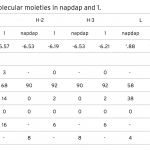


|
451 - 461 |
| The Effects of Citric Acid and Stearic Acid Compatibilizers on the Degradation Behavior of TPS/LDPE Blends for Mulch Films Low density polyethylene (LDPE) is one of the most widely used plastic in agriculture and the degradability of mulch film is increased by introducing thermoplastic starch (TPS) into the LDPE. In this study, TPS/LDPE blends were prepared by twin screw compounder and TPS content is varied from 20 to 40%. To improve the interfacial adhesion and dispersion of TPS, citric acid and stearic acid were added as compatibilizers. To ac- celerate the degradation cobalt(II)acetylacetonate was used as a pro-oxidant. The blended mulch films were buried in soil inoculated with Coriolus versicolor (L.) Quél. and Postia placenta (Fr.) M.J. Larsen & Lombard for 180 days for the degradation. The changes in the chemical structures of the films were evaluated by FTIR spectroscopy before and after soil burial treatment. The weight loss of all samples achieved after 180 days of biodegradation and increasing starch content speeded up the weight loss. The effects of compatibilizers on thermal, tensile and morphological properties of blends were determined by TGA, mechanical and SEM analy- sis. When cobalt(II)acetylacetonate used together with citric acid, the thermal stability of TPS in films was enhanced. It was also found that samples with citric acid exhibited higher elongation at break values compared to films with stearic acid. 





|
463 - 476 |
| Lysozyme Cross-Linked Antibodious Destroyers Against Staphylococcus Aureus In the present study, we have provided a strategy to block staphylococcal protein A (SpA) which acts as a viru- lence factor and increase lysozyme activity against the staphylococcal infection. For this purpose, polymeric antibodious nano IgG has synthesized according to photosensitive micro emulsion technique and developed some binding parts on nano IgG for lysozyme. The bioconjugation method based on aminoacid monomer-prote- in cross-linking applying photosensitation and conjugation approach (ANADOLUCA) on micro and nano-struc- tures by ruthenium-chelate based monomers has used. The antibacterial activities of polymeric nano-IgG and lysozyme cross-linked polymeric nano-IgG have investigated against to Staphylococcus aureus. The effects on S. aureus have determined using dilution plate method and turbidity method. In addition, the effects on S. au- reus of lysozyme cross-linked polymeric nano-IgG have determined using confocal laser scanning microscopy. The biocompatibility of nanobioconjugates has determined by flow cytometry. The results have shown that nanobioconjugates could be used as an effective mimic and antimicrobial agents. 



|
477 - 486 |
| Hesperidin-dsDNA Interaction Based on Electrochemically Reduced Graphene Oxide and Poly-(2,6-Pyridinedicarboxylic Acid) Modified Glassy Carbon Electrode In this work, electrochemically reduced graphene oxide (ERGO) was deposited on a glassy carbon electrode (GCE) and poly(2,6-pyridinedicarboxylic acid) (P(PDCA)) as a second layer was electrosynthesized on ERGO modified GCE and then, the prepared electrode was used to immobilize dsDNA. Electrochemical behaviour of GCE/ERGO/P(PDCA) was investigated by using cyclic voltammetry (CV) and compared with those of the bare GCE. Hesperidin (HDN), a promising anticancer agent, can be detected using GCE/ERGO/P(PDCA)/dsDNA bio- sensor using the differential pulse voltammetry (DPV). The decrease in the guanine oxidation peak current at +0.77 V was used as an indicator for the interaction in 0.5 M ABS (pH 4.8) containing 0.02 M NaCl. The experi- mental parameters such as dsDNA concentration, HDN concentration, dsDNA adsorption time and interaction time were optimized. The guanine oxidation peak currents were linearly proportional to the concentrations of the HDN in the range of in the range of 0.82-82 μM and detection limit was found to be 0.24 μM. The rep- roducibility, repeatability, and applicability of the analysis to human serum samples were also examined. In order to obtain more information about the interaction between dsDNA and HDN, UV-vis spectrophotometry measurements were also performed. The novel DNA biosensor could serve for sensitive, accurate and rapid determination of the HDN. 



|
487 - 497 |
| Application of the Heavy Metal Pollution Index for Surface Waters: A Case Study for Çamlıdere The objective of this study is to assess the water quality of surface waters feeding Çamlıdere Dam, one of the biggest drinking water source of Ankara, capital city of Turkey, with respect to heavy metal contamination. Water samples at three different branches of Çamlıdere Dam were collected and 20 trace metals were analyzed. The concentrations of the elements in most of the samples were found within the limit values given in the standards. At some points, iron, aluminum, arsenic and barium exceed the limit values. The data obtained were used to calculate the heavy metal pollution index for three branches. It was found that the index values correspond to medium class for each branch and the branches are not fully polluted by trace metals. The heavy metal pollution index which includes many parameters was found useful to assess the overall pollution level with respect to heavy metals in Çamlıdere area. 
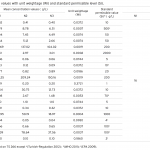
|
499 - 504 |
| Antibiofilm Activity and Chemical Contents of Propolis Samples From Manisa-Turkey In this study, the inhibition of biofilm formation and the reduction of preformed or established biofilm by etha- nol extract of propolis samples (EEP) obtained from Manisa-Turkey was investigated and their chemical com- position was screened. The antibiofilm effect of the propolis extracts against biofilm forming bacteria (Listeria monocytogenes ATCC 7644, Methicillin Sensitive Staphylococcus aureus (clinical isolate) MSSA M20, S. aureus ATCC 33862, S. aureus ATCC 29213, Enterococcus faecalis ATCC 19433, Pseudomonas fluorescens ATCC 55241, Micrococcus luteus NRRL-B1013) was tested on 96-well polystyrene plates using crystal violet assay. Also, the antibacterial activity of EEP was evaluated according to Agar Well Diffusion method. Chemical composition of extracts was detected by Gas Chromatography-Mass Spectrometry (GC/MSD) analyze. The EEP samples exhi- bited good antibiofilm activity against bacteria. The maximum biofilm inhibition activity percentage of MP-1 (Manisa-Köprübaşı), MP-2 (Manisa-Demirci) and MP-3 (Manisa-Kula) were found as 89.4%, 80.0% and 89.0% for L. monocytogenes ATCC 7644 and 66.0%, 67.0% and 74.0% for MSSA M20, respectively. According to GC/ MSD analyze, triacontyl acetate was the major compound found in propolis extracts. 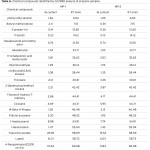
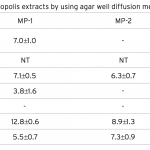

|
505 - 513 |
| Carbonic Anhydrase Activity Responses and Histopathological Changes in Gill and Liver Tissues after Acute Exposure to Chromium in Brown Trout Juveniles Heavy metals are major pollutants in ground, air, marine and fresh water and they cause toxic effects in fish tissues. This study was conducted to determine histopathological effects and changes in carbonic anhy- drase (CA) enzyme activity in liver and gill tissues of brown trout juveniles exposed to chromium (Cr3+). Fish were exposed to chromium concentrations (1 mg/L and 2 mg/L) for 24, 48 and 96h. It was found that CA was significantly inhibited at 48 and 96h of two concentrations (p<0.05). Besides, it was observed that the most common liver changes produced by Cr3+ were hyperemia and hepatocyte degeneration. The gill tissues of fish exposed to Cr3+ were characterized by lamellar hyperemia, lamellar edema, clumping, epithelial degeneration and lamellar atrophy. The present study indicated that Cr3+ inhibits carbonic anhydrase enzyme and causes histopathological damages in gill and liver tissues. 
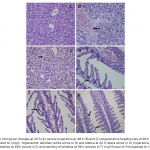


|
515 - 523 |
| Removal of Heavy Metals from the Environment via Phytoremediation (Green Reclamation) Method New methods that are being used all over the world in order to advance technology and increase efficiency in agriculture disrupt the nature which is the main source of life while providing conveniences for people. Pollution of nature has negative effects for all living things within the ecological cycles and humans are inf- licted with the most significant damage. However, since negative rebounds from the environment take a long time, the harmful effects increase irrevocably with increasing investments for future generations. In this study, phytoremediation (vegetative reclamation systems or green reclamation) methods are explained which are the means of neutralizing the harmful aspects in nature or their cleansing via hyperaccumulator plants. This met- hod that is economical, does not disturb the aesthetic appearance and does not harm the nature is a method that can be widely used to combat soil and waters polluted with heavy metals in our country which is continuing to develop in every aspect. This study provides information about the exemplary studies in our country and in the world as well as the applicability of the method. 

|
525 - 533 |
| Electrochemical Detection of Antioxidant Activities of 1,4-Dihydropyridine Derivatives Antioxidant is a molecule which retards the autooxidation of fats and oils. Antioxidants block the oxidation process which can cause damage to many cells in body helping to prevent diseases. Therefore, the importance of antioxidant is in increasing demand. So far many attempts have been carried out for developing to detect antioxidant activities. Among various analytical techniques, electrochemistry has been a more approp- riate way to determine antioxidant activity due to its ease of use and short-lasting application. In this study, it was aimed to determine antioxidant activities of recently synthesized condensed 1,4-dihydropyridine derivatives using disposable pencil graphite electrode. Cyclic voltammetry technique was used to determine oxidation potential value, and also differential pulse voltammetry technique was used to determine reduction potential values of the derivatives. To verify our results, nifedipine was used as a reference drug and conventional antioxidant activities were also used as a basis for comparison. 

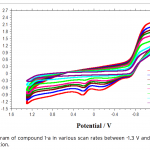



|
535 - 548 |
| Synthesis, Structural Characterization, and Water Solubility of a Novel Modified Poly(maleic anhydride-co-vinyl acetate)/Acriflavine Conjugate Novel functional poly(maleic anhydride-co-vinyl acetate)/acriflavine conjugate, MAVA/AF, was synthesized in two different ways that copolymer:drug ratio was designed as 1:1 and 1:2, respectively. Nontoxic poly- meric drug carrier was prepared for conjugation reaction. The purified copolymer, MAVA, was modified with an antiexternal fungal and anticancer active agent acriflavine (AF) at 60°C for 72 hours in dimethylformami- de (DMF), using triethylamine (TEA) as the catalyst. Structural characterizations were carried out by Fourier Transform Infrared (FTIR) and Nuclear Magnetic Resonance (1H-NMR). The spectroscopic results confirmed that conjugated/modification reaction was successfully carried out by amidification reaction. 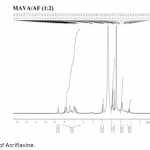

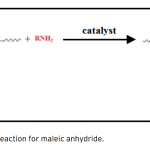

|
549 - 558 |